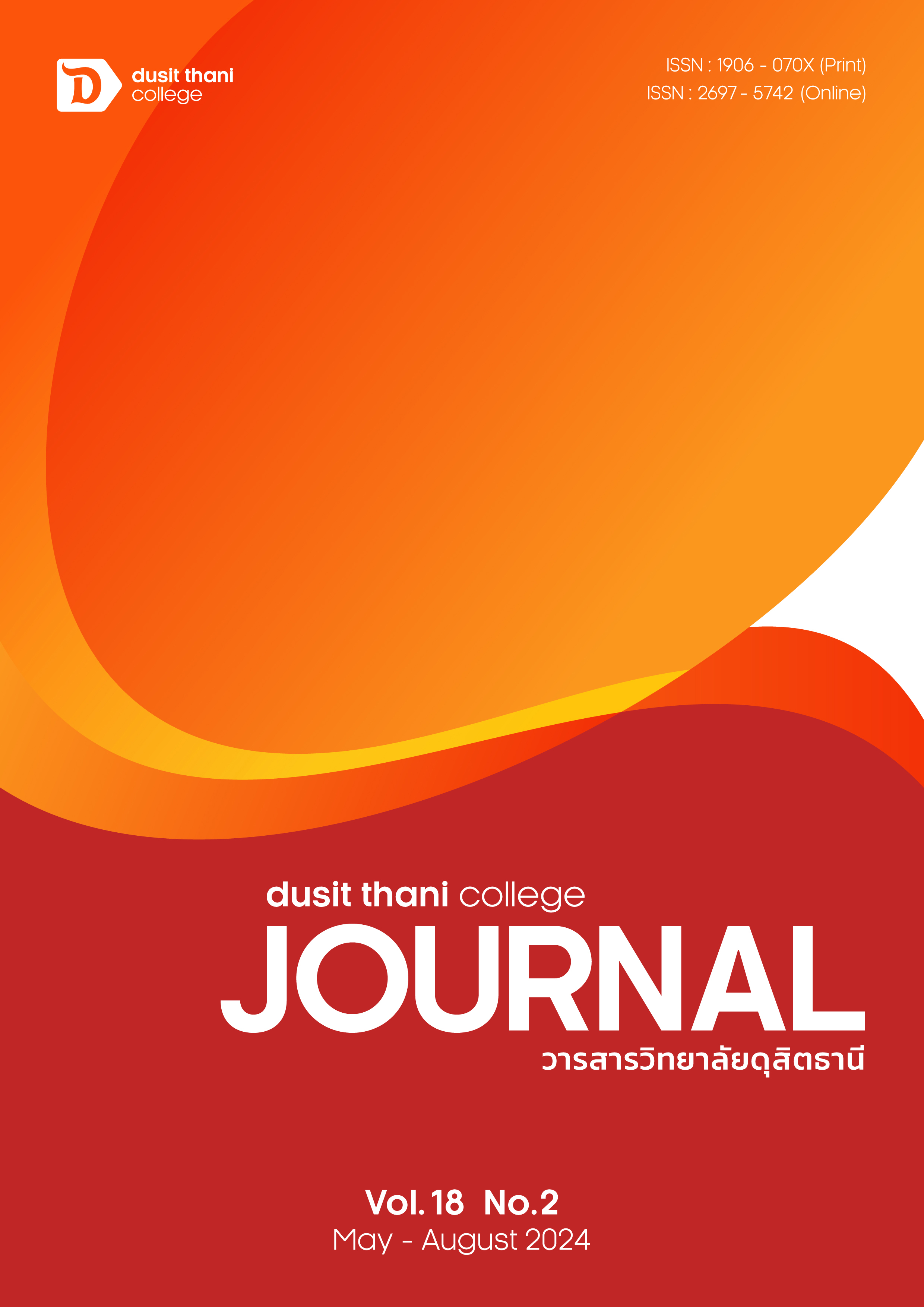Strategies for Enhancing Sports Tourism Management Potential in Koh Samui, Suratthani Province
Main Article Content
Abstract
Sports tourism is immensely significant to the overall economy of the country. Koh Samui, located in Surat Thani Province, is a destination with the potential to attract international tourists and is a popular spot ranked among the world's top tourist destinations. This study aims to explore the development strategies for sports tourism potential in the area of Koh Samui, Surat Thani Province. It was a qualitative research study that identifies 26 key informants involved in sports tourism in Koh Samui. The key informants were selected through purposive sampling and included 7 representatives from local government agencies, 12 representatives from private sector organizations, clubs, and associations related to tourism and sports in the area, and 2 academics from the area. These informants are specifically those with relevant roles, involvement, and experience in managing sports tourism in Koh Samui for no less than 5 years. Data was collected through in-depth interviews using interview questions reviewed by 3 experts in tourism and sports. The variables used in the study were 9 components and supporting factors for managing sports tourism, comprising: 1) sports tourism resources, 2) tourism infrastructure and facilities, 3) sports infrastructure and facilities, 4) safety of sports tourism destinations, 5) sports tourism personnel, 6) local community participation in sports tourism, 7) sports tourism activities, 8) marketing, promotion, and publicity of sports tourism, and 9) sports tourism businesses. Data collection occurred between November 2023 and December 2024.
The study results on strategies for enhancing sports tourism management in Koh Samui include: 1) preserving the natural environment from degradation, 2) additional investment in tourism infrastructure and facilities, 3) investment in sports facilities and infrastructure, 4) developing road systems, organizing public transportation, and controlling traffic efficiently, 5) developing personnel with specialized knowledge in sports, 6) linking the local community with sports tourism, 7) establishing a Koh Samui sports association to support sports tourism, 8) setting up a sports promotion agency in Koh Samui, and 9) promoting the formation of business networks related to sports.
Article Details

This work is licensed under a Creative Commons Attribution-NonCommercial-NoDerivatives 4.0 International License.
Article Screening Policy
- All research and academic articles to be published must be considered and screened by three peer reviews in the relevant field / article.
- All articles, texts, illustrations and tables published in the journal are the personal opinions of the authors. Editors don't always have to agree. And no responsibility whatsoever is the sole responsibility of the author.
- The articles to be published must never be published. Where did you first publish? And not in the consideration of other journals If the audit found that there has been a duplicate publication It is the sole responsibility of the author.
- Any article that the reader sees as being plagiarized or impersonated without reference. Or mislead the work of the author Please let the journal editor know it will be your greatest blessing.
References
Chumchai, P. (2020). Development of sports tourism management models in Chiang Rai Province: A case study of cycling and running sports. National Sports University Academic Journal, 12(3), 193-203. (In Thai)
Khunla, N. (2018). Guidelines for the development of sports tourism on Samui Island, Surat Thani Province. Master's thesis, Faculty of Arts and Management Science, Prince of Songkla University, Surat Thani. (In Thai)
Limphairoj, N. (2011). Strategies for developing sports tourism in Nakhon Ratchasima Province. Master's thesis, Khon Kaen University. Khon Kaen University.
Thepphong, K. (2020). Guidelines for promoting sports tourism through cycling at the Natural and Ecotourism Study Center, Seven Khod-Pongkon Sao, Saraburi Province. Master's thesis, Sports Science Department, Faculty of Sports Science, Burapha University, Chonburi.
(In Thai)
Higham, J. (2005). Introduction to sport tourism impacts and environments. In J. Higham (Ed.), Sport Tourism Destinations Oxford: Elsevier Butterworth-Heinemann.
Hinch, T., and Higham, J. (2011). Sport tourism development (Vol. 13). Bristol: Channel View Publications.
Hritz, N., and Ross, C. (2010). The perceived impacts of sport tourism: An urban host community perspective. Journal of Sport Management, 24(2), 119-138.
Imhun, S. (2017). Management models for adventure sports tourism Doctoral dissertation, Burapha University]. Burapha University. (In Thai)
Kaewsap, W. (2018). Models for organizing paddling activities to promote sports tourism and community resilience. Doctoral dissertation, Burapha University. Burapha University. (In Thai)
Kristianto, B., Fahrudin, A., and Salim, Z. (2019). Determinants of sustainable small islands tourism management: Case study of Pahawang Island, Indonesia. Earth and Environmental Science, 24(1), 012015. doi:https://doi.org/10.1088/1755-1315/241/1/012015
Leiper, N. (1990). Tourism Attraction Systems. Annals of Tourism Research, 17(3), 367-384.
Limphairoj, N. (2011). Strategies for developing sports tourism in Nakhon Ratchasima province. Master’s thesis, Khon Kaen University. Khon Kaen University. (In Thai)
Maier, J., and Weber, W. (1993). Sports tourism in local and regional planning. Retrieved from https://www.tandfonline.com
Morfoulaki, M., Myrovali, G., Kotoula, K.-M., Karagiorgos, T., & Alexandris, K. (2023). Sport tourism as a driving force for destinations’ sustainability. Sustainability, 15(3), 2445. doi:https://doi.org/10.3390/su15032445
Phongprasert, S. (2015). Factors affecting the development of sports tourism in Thailand: A structural equation model. Doctoral dissertation, Chulalongkorn University. Chulalongkorn University. (In Thai)
Prayag, G., Hosany, S., Nunkoo, R., and Alders, T. (2013). London residents’ support for the 2012 Olympic Games: The mediating effect of overall attitude. Tourism Management, 36, 629-640.
Stake, R. E. (2010). Qualitative Research: Studying How Things Work. New York: Guilford Publications, Inc.
Varapinij, P., and Chantracolika, K. (2020). Models of sports tourism in Thailand. Southeast Bangkok Academic Journal (Humanities and Social Sciences), 6(2), 32-44. (In Thai)


